I didn't feel empowered by "Sucker Punch"
Zack Snyder's film is CERTAINLY no "Josie and the Pussycats"
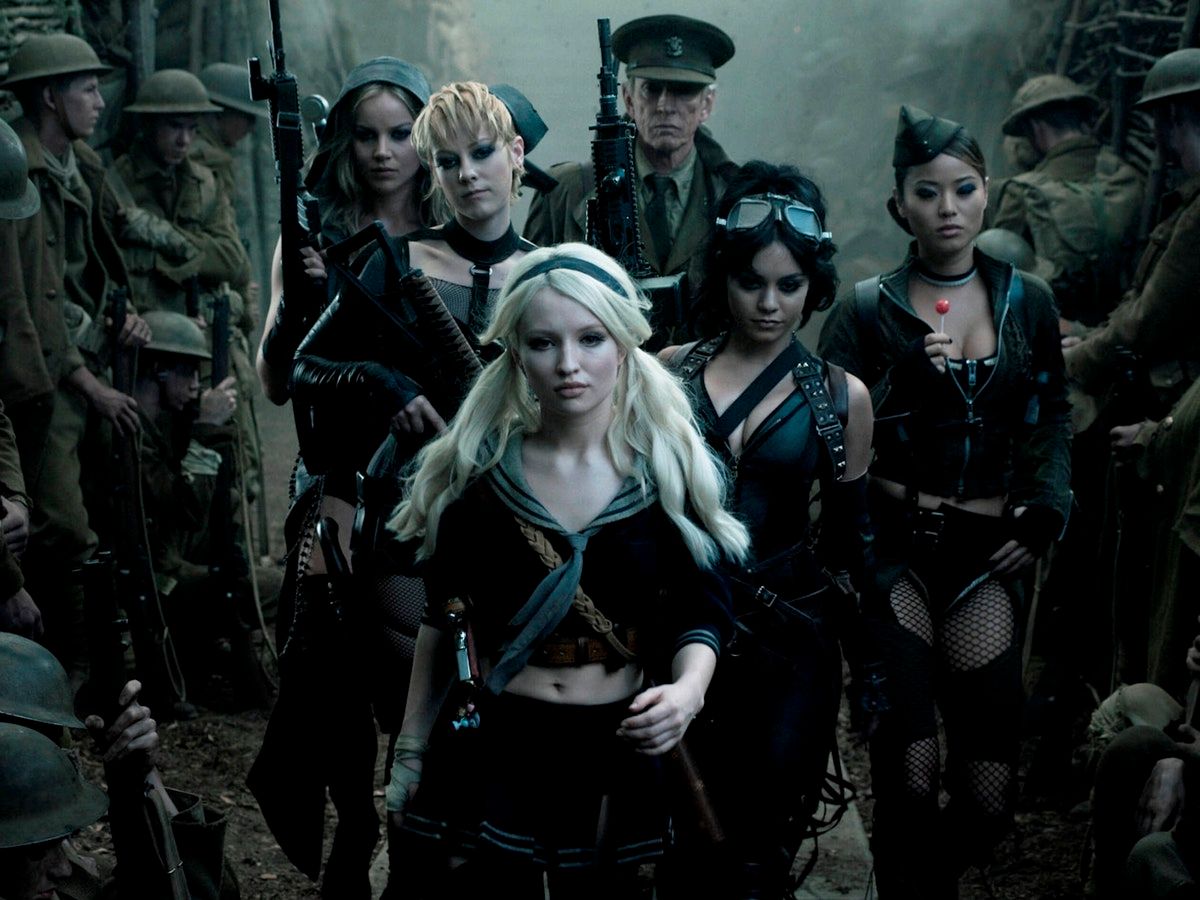
This post recounts plot points from the 2011 film Sucker Punch, running the gamut of sexual trauma. It spoils the entire plot but it’s a bad movie.
Sometimes you’re flipping through the channels and land upon a movie that you wouldn’t have sought out on your own but might as well watch. This is sort of what happened to me with Sucker Punch, Zack Snyder’s 2011 display of Zack Snyderness, except it was a friend who stumbled upon it and then told me to watch it so we could complain about it together. Technically, then, I chose to watch this film. I felt violated by the experience but I guess I was asking for it, which is fitting, because that’s essentially the theme of the movie.
I watched the trailer first and thought “Is this like a less-subtle Fight Club?” and then I watched the movie and it featured “Where Is My Mind?” three scenes in. Truthfully, though, a better comparison would be Inception, if you used the machine to jump down a few levels of a violent 13-year-old boy’s wet dream.
Sucker Punch’s protagonist is a blonde pigtailed waif played by Emily Browning, known previously for playing Violet Baudelaire in the Series of Unfortunate Events movie. Lemony Snicket’s world is intentionally brutal, marked by such over-the-top misery that the effect is darkly comedic, and yet there is a truth that resonates despite the absurdity. Bad things happen and institutions will fail you; children experience trauma and well-meaning adults are too stupid or self-absorbed to take them seriously; the world throws cruel and random misfortunes at us and all we can do is our best. These themes are as skillfully woven into Snicket’s worldbuilding as they are bluntly hammered into your face by Sucker Punch like an ice pick to the eye.
In the first 15 minutes of Sucker Punch, our hero’s mother dies, she escapes a sexual assault by her stepfather, he attempts to sexually assault her little sister instead, our protagonist tries to shoot him but accidentally kills her sister instead, she is carted off to an insane asylum, and her stepfather bribes an orderly to have her lobotomized so she can’t tell the police what happened. We never learn our heroine’s real name, and she doesn’t speak at all until 20 minutes into the movie, because in Sucker Punch characterization is just a list of things that have happened to someone.
The movie is essentially about this girl using fantasy to mentally escape abuse. Before her scheduled lobotomy, she conjures an imaginary world populated by characters, in Wizard of Oz-style double-casting, played by the same actors who play the characters in her reality. In this fantasy world, her stepfather is a priest from the orphanage and she’s an orphan in a full face of makeup and a sexy schoolgirl outfit. The insane asylum is now a brothel. Oscar Isaac’s asylum orderly is now Blue Jones, the nightclub owner, and instead of promising to have her lobotomized by a doctor, he’s promised her virginity to a mysterious “High Roller.” Carla Gugino’s psychotherapist Dr. Gorski, who makes the girls re-enact their trauma in therapy sessions, is now Madame Gorski, the choreographer making the girls dance. It’s all metaphors, get it? This is all a fantasy she’s come up with to dissociate from reality, and she chose to be dressed in a Japanese schoolgirl uniform, imprisoned at a brothel where the girls must scrub the floors and dance for clients. Her fellow prisoners have names like Sweet Pea, Rocket, and Blondie like they're maidens in Castle Anthrax. I don’t see how any of this is a coping mechanism.
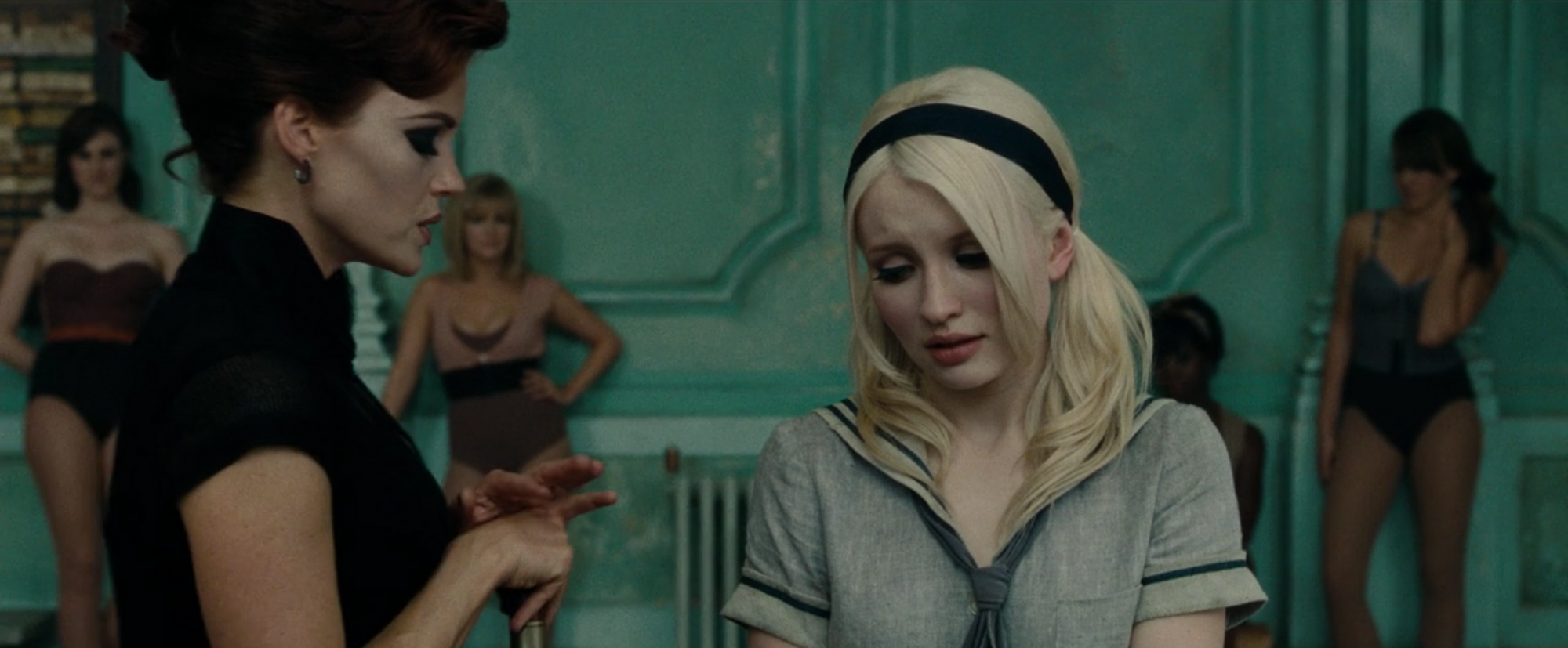
She’s given the stage name Babydoll and commanded to dance by Madame Gorski. She hesitates, clearly traumatized and afraid. She sways as if in a video game start screen. Then she disappears into another level of fantasy, this time in an even sluttier schoolgirl costume, where she gets a quest from a wise man and fights with a katana.
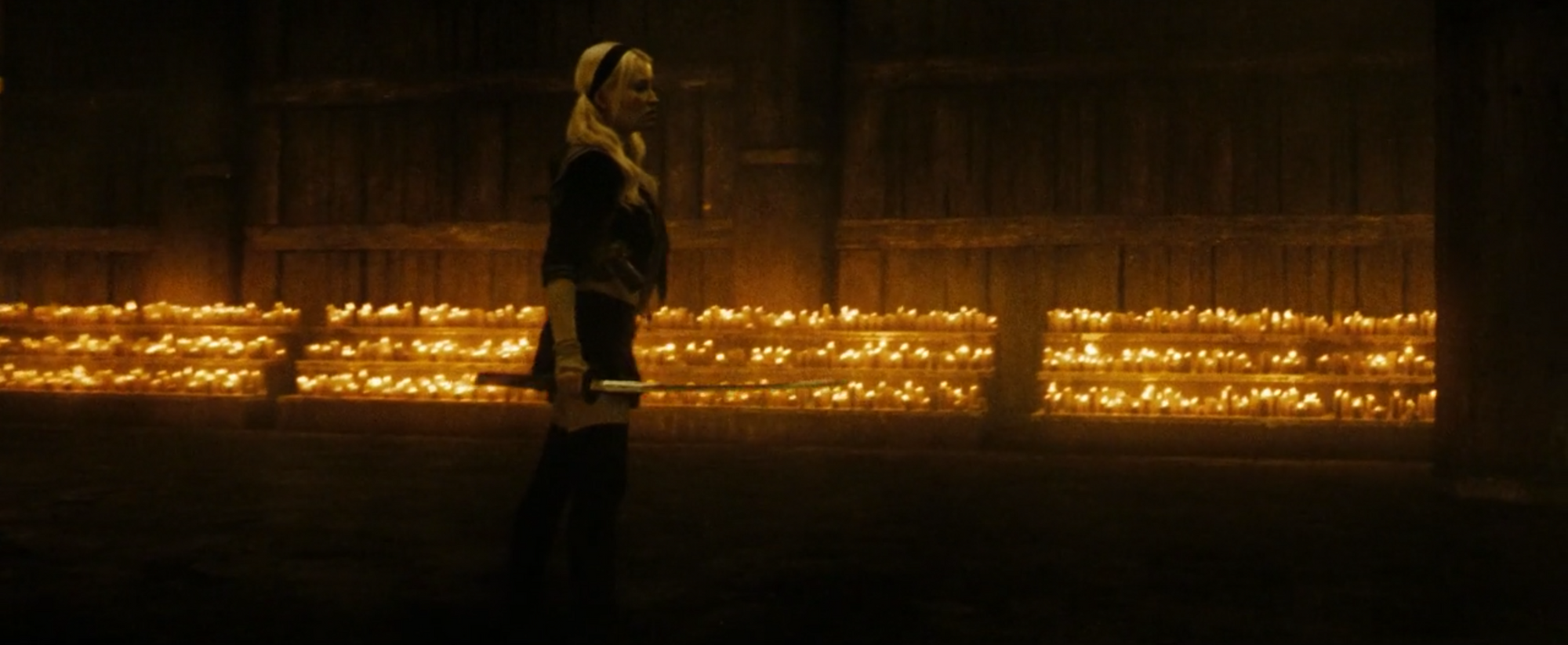
When she emerges from this level of fantasy, having defeated three samurai monsters or something, everyone is astonished at her incredible dance skills. Why did she create a fantasy where she’s trapped as a dancer and sex slave in a brothel if she doesn’t even like dancing and has to escape further down into a video game level of fantasy? Why not just create one level of fantasy, in which she is a good dancer and also no one is exploiting her? The answer is clearly that Zack Snyder wanted to create the world of the brothel, where the trapped teens walk around in corsets and heels and plot their escape. He gives the flimsiest excuse for a metaphor when Madame Gorski encourages Babydoll to dance with a speech no choreographer would ever use when inspiring a traumatized orphan to perform a freestyle dance routine on her first day at a brothel:
“If you do not dance, you have no purpose. And we don’t keep things here that don’t have a purpose. You see, your fight for survival starts right now. You don’t want to be judged? You won’t be. You don’t think you’re strong enough? You are. You’re afraid. Don’t be. You have all the weapons you need. Now fight.”
So Babydoll imagines slaying foes with a katana while she’s gyrating… because dancing is like fighting, and your body is all the weapons. Not your actual body, though, because your physical body is controlled by your stepfather or asylum orderlies in reality and a nightclub owner in your mind. So you have to go further into your mind. It gets very confusing. Also, it would be cool if Carla Gugino could say these inspiring things in the video game fantasy world, but in all of those sequences the girls get instructions from a man.
Babydoll and the other dancers plan to steal a few key items to escape the brothel, and the rest of the film mostly proceeds like a video game except with all the tension sucked out of it. Every time they need to pilfer an item, Babydoll dances to distract a brothel employee and thus transports us to other levels of fantasy where the girls do things like slay dragons in cleavage-baring fetishwear. It gets repetitive, and it sucks a lot of the tension out to know that the action sequences aren’t real and therefore don’t have too many actual consequences, and it is a silly amount of math to go through to calculate that fighting a legion of zombie German WWI soldiers = pilfering a map from Oscar Isaac’s office in the brothel = pilfering a map from Oscar Isaac’s office in the insane asylum.
I guess it’s time for a confession from me: I like Zack Snyder’s style! I hate myself for saying that, but it’s true. The film starts the same way that Snyder’s Watchmen adaptation does: with a dramatic, visually stunning montage set to a very obvious needle drop (here, a grimdark cover of “Sweet Dreams;” Watchmen’s is “The Times They Are a-Changin.”) I know that this is over-the-top and ridiculous, and yet I think the style is so fucking cool in both instances. I want to pretend that I’m above it, but I also want to pretend that I don’t listen to blink-182 anymore. I think steampunk aesthetics are NEAT. I listened to Panic! at the Disco in high school and I read Watchmen and even as my tastes evolve, some pleasure center in my brain still lights up when offered anything that reminds me of the nerd shit I loved as a teen.
So I theoretically understand the appeal of Sucker Punch, and I enjoyed some of the visuals a lot. But overall, the execution of the movie doesn’t work at all. Whether or not you agree that Snyder’s hyperstylized filmmaking is rad, it’s definitely supposed to be, which is the giant problem here. Though the stepfather is clearly a villain, a monstrous caricature who kicks down doors on a rape rampage as lightning crackles outside, the opening scene is shot with dramatic slow-mo and buttons that fly from Babydoll’s ripped pajamas and spin in the front of the frame. It’s flashy when no additional histrionics are needed to underscore the seriousness of the situation, but this is a film about aesthetics more than anything else. Our protagonist wears heavy false eyelashes at all times, even when sleeping.
“Oh, but that’s not fair!” you’re hopefully not saying. “Zack Snyder is clearly aware of what he’s doing!” You don’t need to tell me that. Our introduction to Babydoll’s fantasy brothel is a play being rehearsed onstage. Sweet Pea wears a blonde pigtailed wig and her character is about to get a lobotomy. “This is a joke, right?” she snaps at the director. “Don’t you get the point of this? It’s to turn people on. I get the sexy little schoolgirl, I even get the helpless mental patient, right? That can be hot. But what is this? Lobotomized vegetable? How about something a little more commercial?” I AM AWARE THAT ZACK SNYDER THINKS HE IS AWARE HERE.
Snyder has long contended that this film was an “indictment of fanboy culture.” In an interview following the film’s release, he explained, “It’s funny because someone asked me about why I dressed the girls like that and I said, ‘Do you not get the metaphor there? The girls are in a brothel performing for men in the dark. In the fantasy sequences, the men in the dark are us. The men in the dark are basically me: dorky sci-fi kids.’” He repeated this assertion in a 2019 interview, saying “I’m always shocked that it was so badly misunderstood. I always said that it was a commentary on sexism and geek culture. Someone would ask me, ‘Why did you film the girls this way?’ And I’d say, ‘Well you did!’ Sucker Punch is a fuck you to a lot of people who will watch it.”
I suppose I could accept that the brothel represents the sexualization of women and the lecherous clients represent the male audience if those were the only two levels of reality in the film. But I cannot, for the life of me, figure out why a girl trapped in an insane asylum awaiting a lobotomy would escape to a fantasy world that’s just as exploitative and miserable.
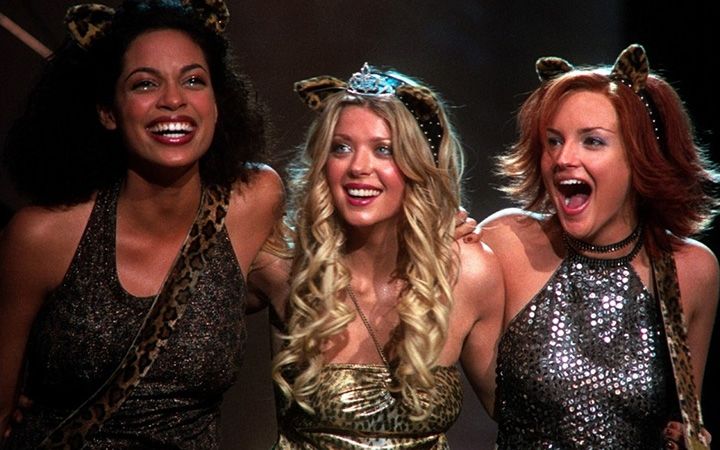
Another movie I watched last week — twice, enthusiastically of my own volition — was Josie and the Pussycats. I loved this movie in middle school and I love it just as passionately now. It’s colorful and the soundtrack is awesome and it feeds my eternal love of the Y2K zeitgeist. I want to wear every outfit that appears onscreen, I want to join an all-girl rock band, and I want to undermine the nefarious schemings of Alan Cumming and Parker Posey with my beautiful best friends. I used to want to be Rachael Leigh Cook, but now I’m an adult and realize I actually want to marry Rosario Dawson. Otherwise my feelings on the movie have remained the same for more than 15 years. I made my friends watch it with me virtually, and one of them said “There’s a lot of montages in this” and I, caught up in my fervor, countered by saying that the montages are awesome! All movies should be 50% montage! It’s like music videos in movies, the best of both worlds!!
The first fifteen minutes of Sucker Punch features two montages with multiple attempted rapes, which I assume was God and Zack Snyder teaming up to punish me for having opinions about cinema. I like Snyder’s stupid style and I liked some of the flashy montages in the film. I understand that sometimes you just want to see cool visuals set to cool music.
But then comes Sucker Punch’s nightmarish third act, in which, at the fantasy brothel level, Blue Jones murders half the girls in cold blood and threatens the remaining girls with rape. Babydoll stabs Blue and makes an attempt at escape with Sweet Pea but reaches a group of men by the gate. Babydoll decides to sacrifice herself by distracting the men to let Sweet Pea go free. “You’re the strongest,” she says. “You’re the only one of us who ever had a chance out there.” She walks into the crowd of men, presumably to get dragged back in and given to the High Roller, and in her reality she gets the ice pick driven into her brain.
The lobotomy doctor (played by Jon Hamm, who also plays the High Roller) is unnerved by the look in her eyes when he lobotomized her. “It’s like she wanted me to do it,” he says. (Put a pin labeled “Yikes!” in that for a minute.) So he asks Dr. Gorski about her case, and this inquiry brings to light the fact that Blue had been forging Dr. Gorski’s signature to get patients lobotomized in exchange for bribes. Dr. Gorski calls the police and they burst in right before Blue was about to rape Babydoll’s unresponsive vegetable body. We see evidence around the asylum that Babydoll had, as in her fantasy, stabbed Blue, started a fire, and helped another patient escape. Babydoll’s blank face looks serene and happy. As Sweet Pea rides off on a bus, she provides melodramatic voiceover underscoring the point:
“Who is it that chooses our steps in the dance? Who drives us mad, lashes us with whips and crowns us with victory when we survive the impossible? Who is it, who does all these things? Who honors those we love with the very life we live? Who sends monsters to kill us and at the same time sings that we will never die? Who teaches us what’s real and how to laugh at lies? Who decides why we live and what we’ll die to defend? Who chains us and who holds the key that can set us free? It’s you. You have all the weapons you need. Now fight.”
Babydoll held the key that could set her free, and it was dissociating to several levels of fantasy world, because she’s not as strong as Sweet Pea and her delicate brain couldn’t make it in the real world. So she wanted the lobotomy to forget the terrible opening montage of the movie, and that’s empowering because she chose it, even if she didn’t say so out loud. It’s more empowering than working through the trauma and going on to live her life, which was never considered as an option.
A disturbing deleted scene with the High Roller explains the movie’s thesis more bluntly. After getting punched out by the men by the gate, Babydoll comes to on a bed, where she’s been undressed. Jon Hamm tells her that he wouldn’t like to take her by force, so he’d prefer if she gave herself to him willingly. If she did so, he would guarantee her freedom from the brothel. So Babydoll kisses him, choosing this for herself. Except that he paid money to get her alone in a room and she wouldn’t ever be free from the brothel if she doesn’t do it. But it’s fine that he holds all the power here, because she wanted it. (This scene was removed to ensure a PG-13 rating, but all of the implied and attempted rapes were fine.)
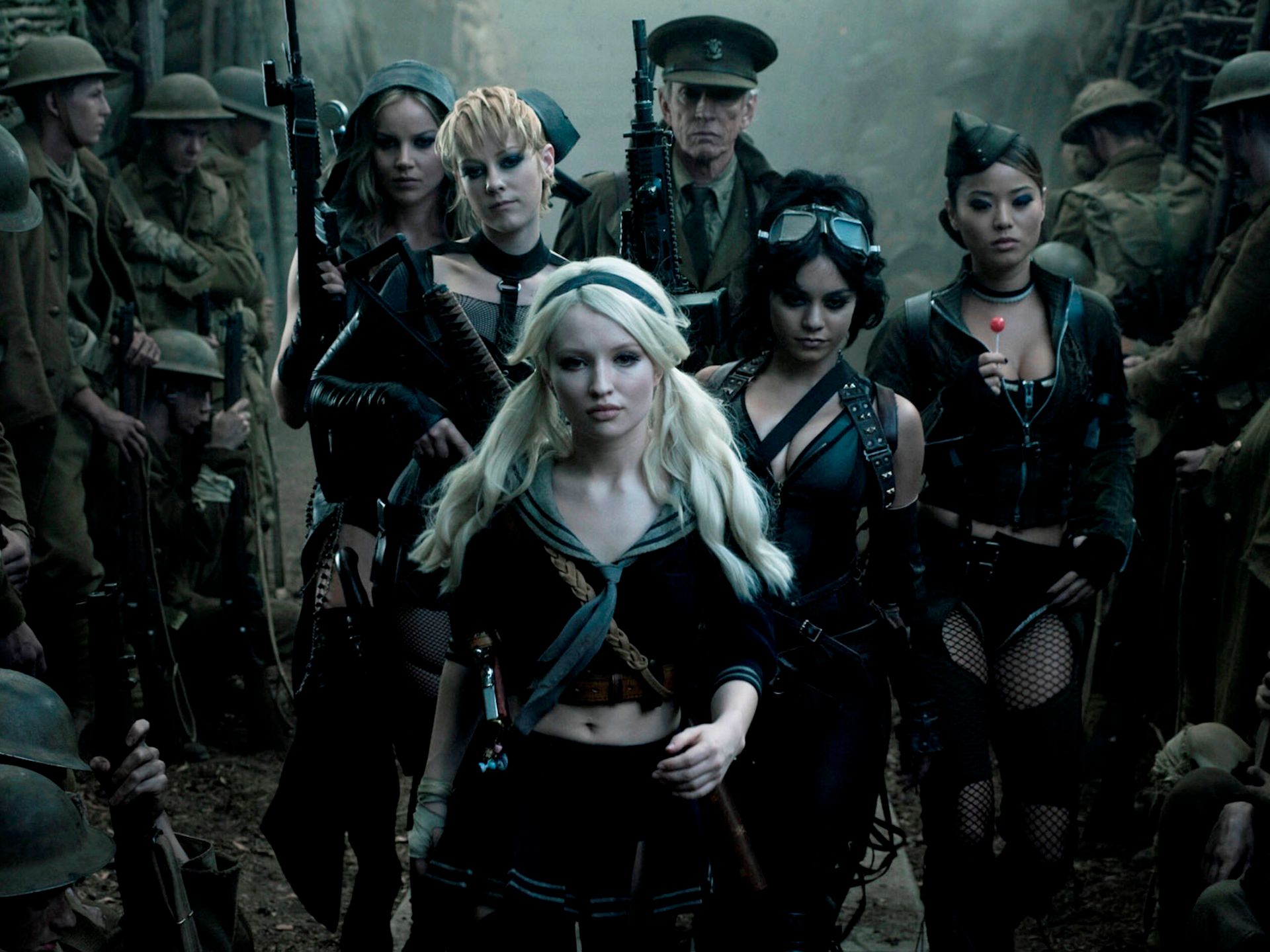
This is obviously Snyder’s justification for having his cake and eating it too. Sexiness is empowering if it’s your choice. Babydoll chooses to wear a midriff-baring schoolgirl costume and Gothic Lolita heels in her fantasy battle sequences, so we don’t get to criticize that. But the reason that this film is so often compared to the fantasies of a 13-year-old boy specifically is that the costumes are so catered to basic male titillation. Babydoll’s costume is intentionally infantilizing, with fussy, childlike motifs that communicate the message that she is delicate and inexperienced. Of course, the style is intentionally sexualized as well. Every time Babydoll did a flip in her tiny skirt, revealing her underwear, I thought about my joyous experience watching Birds of Prey and how Harley Quinn and the gang wore cool outfits that made them look badass but still allowed them to actually move.
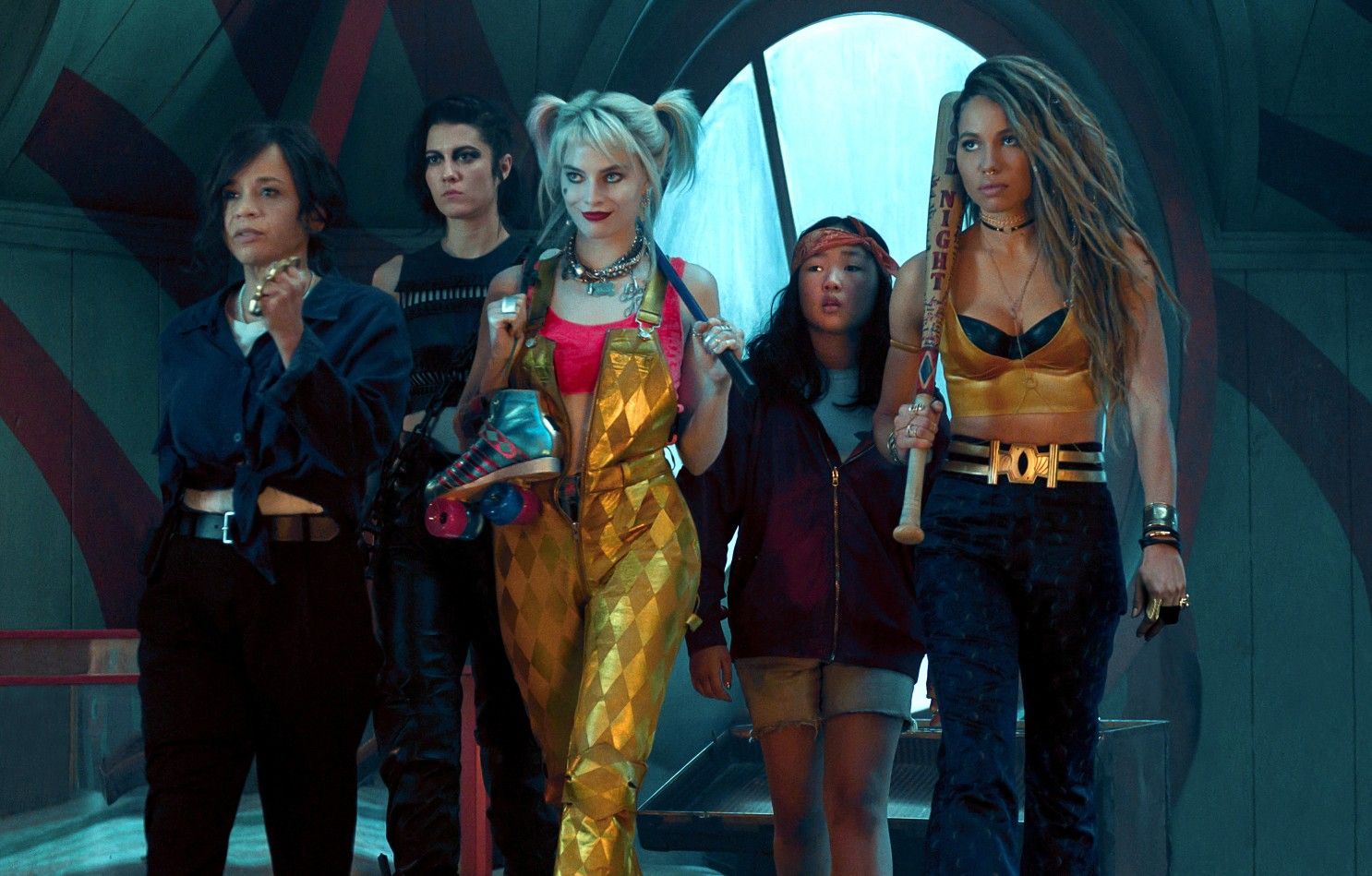
Of course, dressing in a sexualized way doesn’t take away agency or mean that a character isn’t worthy of respect. The women in Sucker Punch feel objectified because the movie literally treats them like objects, a performance being play-acted with dolls instead of characters with motivations and personalities. For instance, we see Babydoll hear every word of the exchange between her stepfather paying Blue to arrange for her lobotomy, so she could have actively told Jon Hamm this with her voice. Instead, he reads into a mysterious look in her eyes and has to do the work of uncovering Blue’s scheme. This lack of agency makes it difficult to relate to the female characters as people.
Almost every man in the movie is an irredeemable rape monster, so they’re not relatable either, but the film is obviously trying to portray them as obstacles to overcome. The five imprisoned girls are supposed to be heroic and inspiring, and they certainly could have been. Emily Browning can actually can do the flips she performs in the film! The cast underwent vigorous training before shooting, and footage from this period shows tiny Jena Malone deadlifting 235 pounds. Watching that video makes me feel legitimately inspired. The concept of imagining myself in a tight leather corset dismantling a bomb to cope with my body being violated in real life does not inspire me in the same way.
The three leading ladies in Josie and the Pussycats also trained vigorously for their film. They learned to play their instruments! I would have written an essay about Josie and the Pussycats, but it’s not streaming anywhere and I would want anyone to experience the joy of watching it before I could spoil a single plot point.
The opening credits scene is a montage, of course, that introduces us to the characters. They share makeup and go out dancing and live together in a funky Y2K-ass house. The rescue kittens and jump on trampolines and follow their dreams. It is a fantasy that still resonates with me.
In his extremely correct video “Josie and the Pussycats is the Greatest Film Ever Made” — which, again, you should only watch after seeing the movie, because you should get to appreciate it with fresh eyes — John Field says that Josie and the Pussycats is subversive because of its female-centric narrative arc. It’s a movie about friendship and the plot is resolved because of friendship. Obviously Josie and the Pussycats is a very different movie than Sucker Punch. Birds of Prey is a better comparison point, as it also deals with women escaping abusive men (occasionally through stylized dissociative fantasy sequences!), but I left both Birds of Prey and Josie feeling pumped and inspired and left Sucker Punch feeling deeply bummed out.
Sucker Punch suffers from a lack of imagination. Though it can conjure up dragons and steampunk zombie soldiers, it can’t imagine a world free of violence where women form friendships, not allegiances. It offers the promise of escape through your mind, the key to your chains, but no retribution for the trauma inflicted on your body. But the opposite of violence against women is not violence against men. It’s kindness and collaboration. The opposite of exploitation isn’t choosing violation. It’s having the freedom to do whatever you want to do, without limited choices. Just because a movie has a message doesn’t mean it’s smart. A movie doesn’t have to be gritty to contain a serious message, and it doesn’t have to be violent to be empowering. A movie that’s truly empowering to women would just let Oscar Isaac be hot so we could enjoy that. Let more women make movies and make Zack Snyder go back to directing music videos. And watch Josie and the Pussycats if you get a chance, because joy is empowering. That’s a lesson that Zack Snyder could stand to learn.
